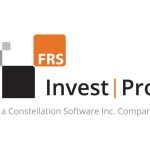
Diversification Tactics for Dutch Investors: Navigating Risk in Uncertain Markets
Political upheavals, fluctuating markets, and unpredictable global events like pandemics or trade wars can cause significant volatility in the financial landscape. For Dutch investors, navigating such uncertainty requires a well-thought-out strategy. One of the most effective ways to manage risk in uncertain markets is through diversification.
Diversification, the practice of spreading investments across various asset classes, geographical regions, and industries, is a cornerstone of risk management. It helps reduce the impact of any single investment’s poor performance on the overall portfolio.
Key Diversification Strategies for Dutch Investors
Dutch investors can diversify their portfolios through various asset classes, each offering different risk and return profiles:
- Equities: Both domestic and international stocks provide growth opportunities but can be volatile. Including shares from multiple regions captures growth across different economies.
- Bonds: Offering steadier returns, bonds—such as government, corporate, and municipal bonds—help stabilize portfolios with lower risk compared to equities.
- Real Estate: Investments in property or REITs hedge against inflation and provide diversification beyond traditional stocks and bonds, acting as a tangible asset class.
- Commodities & Precious Metals: Gold, silver, and oil often move counter to traditional markets, offering protection against inflation and economic uncertainty, with precious metals seen as safe-haven investments.
Spreading investments globally—across Europe, the U.S., and emerging markets—reduces exposure to country-specific risks like economic downturns or political instability.
Diversifying across sectors like technology, healthcare, and energy helps protect against risks specific to any one industry. For example, while tech may be volatile, healthcare remains stable during economic downturns.
Navigating Market Volatility with Strategic Allocations
Dutch investors can approach diversification in two ways: strategic asset allocation and tactical asset allocation.
- Strategic Asset Allocation: This long-term approach involves setting a target mix of assets based on factors like risk tolerance, investment goals, and time horizon. Once set, the allocation remains relatively stable unless there’s a significant change in the investor’s personal circumstances or goals.
- Tactical Asset Allocation: This more flexible approach allows investors to adjust their asset allocation based on market conditions. For instance, if an investor believes that stocks will perform well in the short term, they might temporarily increase their equity allocation. However, tactical moves require careful consideration and can be riskier if market predictions don’t materialize as expected.
Rebalancing Portfolios in Times of Volatility
Rebalancing is crucial in times of market volatility. Over time, the market’s fluctuations can cause certain assets to represent a larger portion of the portfolio than initially intended. Rebalancing involves adjusting the portfolio back to its target allocation by buying or selling assets.
For instance, if a stock-heavy portfolio experiences a surge in equity prices, the stock allocation may rise above the target level. Rebalancing helps to maintain the desired level of risk and ensures that the portfolio stays aligned with the investor’s long-term objectives.
Alternative Investments
In addition to traditional assets like stocks and bonds, alternative investments such as hedge funds, private equity, and venture capital can provide diversification. These assets often have a low correlation with traditional markets, meaning their performance is not closely tied to the ups and downs of stock markets. However, alternative investments often come with higher risks and liquidity constraints, so they should be approached with caution.
Risk Tolerance and Personalizing Diversification Strategies
Every investor has a unique risk tolerance, which is influenced by factors such as age, income, financial goals, and experience. Younger investors typically have a higher risk tolerance because they have more time to recover from market downturns. In contrast, investors nearing retirement may prefer a more conservative portfolio to protect their wealth.
Understanding your risk tolerance is essential when building a diversified portfolio. It ensures that you allocate your investments in a way that aligns with your financial goals while providing enough protection against potential losses.
Creating a personalized diversification plan begins with understanding your financial situation, investment horizon, and risk appetite. Once you have a clear picture, you can build a portfolio that balances growth and stability. For instance, a younger investor might allocate more to equities for growth, while an older investor might prioritize bonds and real estate for stability.
Brokers like Saxo can help Dutch investors manage their portfolios, offering a wide range of asset classes and diversification options, along with educational resources to make informed decisions.
Impact of Dutch and European Regulations on Diversification
Dutch investors must be aware of the regulatory environment, as the Netherlands adheres to strict EU regulations that ensure transparency and investor protection, governed by bodies like the European Securities and Markets Authority (ESMA). Changes in tax laws or investment restrictions can affect portfolios, so staying informed is crucial.
Capital Gains Tax and Tax-Efficient Strategies: Dutch investors should consider tax-efficient strategies, as capital gains are taxed based on asset value. Utilizing tax-deferred or tax-exempt accounts can help reduce tax liability, making diversification more effective over time.
Conclusion
Diversification remains one of the most powerful tools for managing risk in uncertain markets. By spreading investments across different asset classes, sectors, and regions, Dutch investors can navigate market volatility with greater confidence. It’s crucial to understand your risk tolerance and investment goals when building a diversified portfolio and to regularly rebalance your holdings to maintain a healthy allocation.












